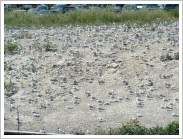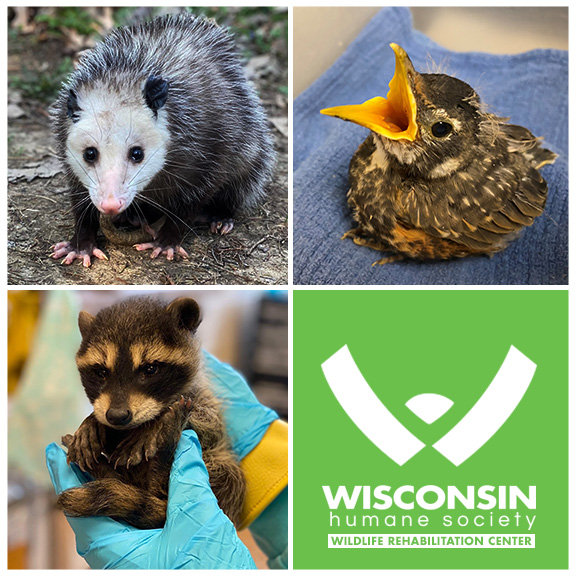Gulls
Getting along with Gulls
In recent years gulls have become increasingly common in urban environments. Residential and commercial developments on  shorelines and islands have driven gulls away from some of their traditional nesting sites and they have adapted to nesting on gravel rooftops and vacant lots, especially near bodies of water. Gulls have also learned to forage for garbage at dumps and in urban areas. Most conflicts with gulls can be abated or prevented with simple, humane techniques.
shorelines and islands have driven gulls away from some of their traditional nesting sites and they have adapted to nesting on gravel rooftops and vacant lots, especially near bodies of water. Gulls have also learned to forage for garbage at dumps and in urban areas. Most conflicts with gulls can be abated or prevented with simple, humane techniques.
Problems
Conflicts usually arise during nesting season from adult gulls swooping down at people to protect their nests or chicks and from gull droppings on cars, boats, piers, swimming areas and around businesses.
Ring-billed gulls (one of two common gull species we have in our area) are highly colonial when they nest and a nesting colony may number in the thousands of birds. Herring gulls nest alone or in less densely-packed colonies than Ring-billed gulls and often mix with Ring-billed gull colonies.
Conflicts with gulls can often be prevented or solved by using the humane techniques described in this article. As with all nuisance wildlife situations, a combination of these techniques is often needed to obtain the best results.
Habitat Modification
There are several ways that habitat modification (changing the landscape) can be used to reduce conflicts with gulls. Reducing or eliminating artificial food sources such as human food wastes at dumps and landfills and near restaurants and food processing plants is effective. Also, manipulate vegetation height by limiting mowing - dense vegetation that is higher than the gulls when they are standing reduces their ability to see approaching predators and may make them abandon the area. Draining or otherwise eliminating puddles and pools of standing water that attract gulls is also a good strategy.
Scare Tactics
Business owners can prevent gulls from nesting on rooftops and on undeveloped properties by watching for gulls visiting their  properties starting in late February, March and early April, depending on the weather. These birds may be checking out the area to later establish a nesting colony. Before the birds actually begin nesting, it is legal and humane to chase the birds away or make noise to frighten them away. However, do not strike the birds with anything and of course, do not physically harm them in any way. Trained Border Collies can be used very effectively to chase birds from areas where they are not wanted.
properties starting in late February, March and early April, depending on the weather. These birds may be checking out the area to later establish a nesting colony. Before the birds actually begin nesting, it is legal and humane to chase the birds away or make noise to frighten them away. However, do not strike the birds with anything and of course, do not physically harm them in any way. Trained Border Collies can be used very effectively to chase birds from areas where they are not wanted.
Discouraging the birds, timed before they begin nesting, can get them to look elsewhere to nest. After the birds have laid eggs, it is against federal law to disturb the birds, their nests or their eggs!
In some cases scare devices, like the use of strips of shimmering Mylar tape, can scare gulls, but such measures need to be changed around periodically or else the birds will get used to them. Decoys that look like dead gulls can be placed in gull resting areas and especially when coupled with scare tactics like noisemakers, can get gulls to leave an area.
Exclusion
Anti-gull colony String Grids
A grid of fishing line or wire, mounted on poles spaced 10 to 15 feet apart has been shown to effectively dissuade gulls from nesting on rooftops or fields on which it is applied. These grids must be erected before the start of the gull mating season.
Grids of wire or fishing line can be spaced as wide as 30 feet apart have been shown to keep gulls away from garbage dumps, if the food attraction is not too great. Wire spacing of 15 feet was successful in keeping most gulls away, even when the food attraction was great. Wire grids with spacing of 30 feet have successfully kept gulls away from fish-farming ponds.
Bird Spikes
Gulls can be dissuaded from perching on ledges and walls by using "bird spikes," sometimes called "porcupine wires." These are strips of bristling metal or plastic wires or spikes that can strongly discourage gulls from landing on surfaces to which they are properly applied.
The Bird Spider
The Bird Spider does look somewhat like a wire spider with long, curved wire legs radiating from a central mounting point. This product can keep gulls from perching on poles, street lights, boat cabins and other areas up to several square feet in size.
Please Do Not Feed the Gulls
Gull populations are growing in urban areas, in part due to the garbage and food scraps they find scavenging at dumps, landfills and on city streets and parking lots. We can all help out by disposing of food waste in covered cans and dumpsters.



